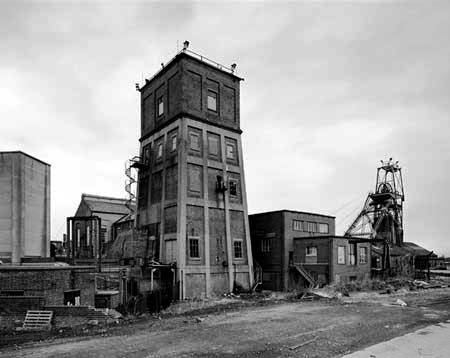
Murton Colliery 1992
Copyright © English Heritage and reproduced here with their kind permission
The sinking of the shafts began in April 1838 by the South Hetton Coal Company, but is was some five years later that the Hutton Seam was reached, due to the tremenous difficulties that were met. When the shaft was nearing 200 feet deep a waterlogged sand bed was encountered and it took many weeks, pumping at 10,000 gallons a minute, to regain control of the shaft; metal tubbing was used to seal this water feeder.
The 14 foot diameter shafts reached the Hutton seam at 1476 feet, but also worked the Five Quarter (1068ft), Main Coal (1224ft) & Low Main (1356ft) seams.
By 1894 the daily output was 3000 tons and 2000 men and boys were employed.1
In 1922 the Koepe Winder (see photo) installed at west pit and remained in use until the colliery closed.2
On the 26th June 1942 an explosion of methane caused by shotfiring claimed the lives of 15 miners. The full report can be found here.
At nationalisation in 1947 the colliery passed into the hands of the National Coal Board and worked up to the closure in November 1991.
The Koepe Winder was list Grade: II in January 1992,3 but was subsequently demolished in May 1994.
Return to previous page
